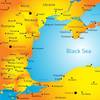NY’s New ‘Taxi Driver’
If you want to call yourself a taxi in New York, you've got things to live up to. Take tradition. A New York taxi always beat everybody to the punch. It was the first away when the light changed, weaving through otherwise orderly rows of cars and trucks, just in time to beat the next light. The ride not only was fast, it looked fast. The driver, all the while, dispensed worldly wisdom on any theme, and if you asked, could name the best oyster bar in the entire city. He spoke New Yorkese - an "R," (if pronounced at all) could be a "W" or a "V" - but it was English. Etched in his mind was the map of the five boroughs, and all their one-way streets. He was friendly, considerate, and caring - waited until you were indoors when he dropped you off, before cruising away for the next fare. Maybe this all happened only in the movies, and 1940s movies at that. But it left a myth, or at least an expectation. You could get where you were going, with no ifs, ands, or buts, and you could feel protected all the way. That's a lot to live up to, in today's New York. Tom Fox understood this perfectly, as the New York Water Taxi began taking form. His would not be the first harbor service to call itself a water taxi - plenty of other harbors have boats by the same name, and even New York has the Liberty Marina Water Taxi. But would be only one New York Water Taxi, and you'd be able to tell it from the rest. "The fact that the boats are small and yellow is important," Mr. Fox told us in July 2003, soon after his first 16.4-m catamarans began skipping about their destinations, dashing along at 20 to 24 knots. "The branding is important, because all the other boats in New York harbor are basically white. If you were designing for stealth, it would do very well to use white boats because nobody can see them. Ours are easy to see - and people like the zippy look. We're bright yellow. We have a checkerboard. Our people are friendly." To an ear tuned to New York, there might have been signals embedded in that description. Invisible white boats? Who has white boats? Well, there's Carnival Cruise Lines, there's the U.S. Coast Guard, there's New York Waterway. One of them runs high-speed ferries. Friendliness? Reports vary, across the uncounted boats painted white on New York Harbor. By October 2004, there were six boats painted yellow, scooting about in the copyrighted livery of the New York Water Taxi. Mr. Fox expected to have "a dozen boats by 2005."
Out For A Spin "The first three Water Taxis had their air-conditioning units up front," said Anthony over his shoulder, as we barreled up the East River last autumn, "so their bows ride lower and pick-up more spray. The second three are almost exactly identical, but the bow rides higher because the air conditioners were put in the back." We were two minutes out of Pier 11, the main East River hub for New York's three main fast ferry services, and already we knew about the man in the driver's seat: he was named Anthony (not "captain," he mentioned), in his early twenties, engaged, grew up around the maritime communities of Brooklyn and Long Island. "I always figured I'd be somewhere out here, doing something like this," he said. He had some advice about docking around Long Island. There seemed to be a few things you'd recognize in the old-fashioned cabbie. But it's a new age, a different taxi, so what is the protocol at the end of the ride? Tip him? Salute him?
In Name, Mostly In the words of the designers, Nigel Gee Associates, "Calling the 16m catamarans water taxis is something of a misnomer as each [is] fitted out with 54 passenger seats, a small refreshment kiosk and a toilet on the aft deck." In short, the New York Water Taxi is a ferry. A high-speed ferry around the lower one-third of Manhattan, to Queens, Brooklyn, and New Jersey. It's the new kid on the block, in a market pioneered and dominated by New York Waterway. Where Waterway started essentially from scratch, New York Water Taxi had them to play off. The festive flair of the boats owes much to the arches forward at both sides, which extend the curve of the upper deck down to the main deck and seem to round-off the bow. They look aerodynamic from the front, streamlined, speedy, and most of all, unique. The glassed-in booth protruding on the main deck, the one-seat wheelhouse, completes the raked effect with the slope back from its nose. Altogether, the extended architecture revives something thought lost in public transportation, high spirit and charm. High spirits are recommended, aboard any of New York's fast harbor ferries. The ride certainly involves motion. In many more directions, more suddenly, than people would find on the subway. Movements are sharp and abrupt, and the passenger is glad for those 54 seats. The waters around New York have an irregular surface and their share of flotsam, and staccato maneuvers are all quite normal for a fast boat. On 11th Avenue, they'd be alarming. With next month's arrival of the first of two larger New York Water Taxis - Incat designs, all-aluminum, built by Gladding-Hearn - Coast Guard certification lingo settles what to call the craft: "USCG Subchapter T, 149 passenger Ferry and/or 99 passenger Water Taxi."
Not Just Another Happy Face Whether there's a market for a waterborne service more literally taxi-like - a private personal transportation vehicle rented by-the-mile with chauffeur, flagged-down from the shore - is yet to be demonstrated. For now, with whatever sense of carnival dashes along with them, New York Water Taxi's first half-dozen boats also bring traits of the serious public conveyance. For passengers waiting at the dock, especially a busy one like Pier 11, the bright destination boards identify each boat from a distance. Even if Lou Camacho weren't on hand as dispatcher and dispenser of directions, Water Taxi's riders would easily know when to get up for boarding. For such yellow craft, the New York Water Taxis are doggedly green, a point to make note of in a city that has grown emissions-conscious. Tom Fox cites their Detroit Series 60 engines as atmosphere-friendly, while the design of the hulls should be gentle on the water. The question of wakes, the damage they cause and the responsibilities they impose, has been contentious in New York, the pitch of the clamor over the years rising in apparent parallel with the increase in high-speed ferries. New York Waterway took a lot of the heat, particularly after impressing several non-ferry vessels into emergency service following the 9/11 attacks. Management acknowledged the temporary boats' shortcomings compared to their purpose-built ferries, assured their discontinuance as soon as could be (now done), and demonstrated a new tracking system that would blow the whistle, in effect, on any Waterway skipper going too fast. "You're responsible for your wake," one member of the anti-wake coalition repeated, "no matter why or what you'll do tomorrow." In November 2003, the company called-in critics for a closed demo of the new tracking system, the outcome of which is uncertain. The course at Waterway took a new heading, as the company announced it could no longer continue key routes between New Jersey and Manhattan.
The Bubble Some ferry executives describe "five years' growth" in the two years following 9/11, but eventually the damaged cross-Hudson subways were back in service. Five years of growth found only three years of market, after the subway riders receded from the charming but indirect waterborne route to their connections. It's the old story about wartime expansion. Whether that growth was sustainable or not, it set other things in motion. Ferry operators in New York today bank on the forced discovery, by commuters who wouldn't have chosen the ride otherwise, of what a pleasant commute the ferry can be. Not everyone has inland connections - plenty of people can walk to work from the waterfront. As we went to press, the Jersey Journal, under the headline "Ferry Saved!," announced a new contender, BillyBey Ferry Company LLC. The firm had reached tentative agreements with the Port Authority to acquire Waterway's Hoboken and Jersey City routes. New York Waterway would continue its Weehawken and Belford N.J. routes, along with its run up the river at Haverstraw.
New York Waterway also would provide personnel and continue to manage and operate the Hoboken and Jersey City runs for BillyBey. A fee charged by the Port Authority - "one of the factors that put NY Waterway's busy Hoboken routes in the red, officials said" according to the Journal - would approximately be halved for the same service under the new ownership. "People who have been briefed on his plan," said The New York Times, "said that passengers might not even notice the changeover because Wachtel [described as owner of BillyBey and a partner in a Manhattan law firm] does not intend to change the logo." An oldtime New York cabbie would tell you that the shortest distance between two points is a straight line. And the Avenues of Manhattan may be among the last straight lines in the region. The convoluted, twisty-turny careers of modern commuter ferry operators - charges, allegations, complaints, misfortunes and all - echo conditions a century ago that produced municipal takeovers. The concept came up again, before the appearance of BillyBey.
Still Waters Run Deep The shape of things to come was pretty clear, when New York Water Taxi began running in September 2002. High-wake or low, dozens of vessels crisscrossing the lower Hudson and upper Bay churn the waters, as dictated by laws of physics. If Waterway took the heat, it was partly because they had the most boats. They control more today, and others have jumped into the pool. New York Water Taxi has revised its estimate upward, to "fifteen boats by 2006," according to the company's new Director of Marine Operations, Tom Paldino.
Some are predicting that the strained lines of tugboat tows, damage to the shoreline and moored craft, are the inevitable byproducts of highspeed transportation. The remedies, some say, have less to do with assigning blame, or designing even more efficient vessels, than the construction of resources that mitigate the effects of turbulent water. Some of the potential solutions appear to be opposed by environmental regulations. Into the midst of such turbulence, oceanographic and social, stepped Tom Fox with the Water Taxi. "How do I say our boats are low-wake?" he asked, early-on. "How do I substantiate it? How is it defined?" He came upon the Rich Passage regulations from the Seattle area, where ferry wakes had incited community action. Certain standards were set. "Our boats exceed those standards," said Mr. Fox. "People see us as someone who cares." Tom Fox says he was one of the first Urban Rangers. "That's when I fell in love with the harbor, and got the idea of connecting parks by water - it only took 30 years." About 20 of those were spent actually building the parks, "including the Brooklyn Bridge Park, and the Hudson River Park." He left the latter to pursue other interests - including the rudiments of the Water Taxi - the Park's administration turning mostly to "people who are neither waterfront people nor park builders." The idea that people like looking at boats, modern and historic, was built into the original Hudson River Park design, Tom Fox told us. "We kept a midtown maritime district. I purposely did not sanitize the waterfront." Supporting that original view, Mr. Fox now serves on the board of Friends of the Hudson River Park, which campaigns for a Hudson River Park that's "designed for the reception of boats. There should be a harbor master." Quality of life is a big issue in New York. A lot more people inhabit Manhattan than its landmass was designed for. They need all the help they can get, just to put up with it all. Some, for example, just by dint of numbers, get pushed to the fringes. Where do they go from there?
Saved from Isolation "I was concerned about the isolation of many New York neighborhoods," Mr. Fox told us, "where residents might have to walk three or more blocks to get to the subway." The "Hop on, Hop off" campaign of the Water Taxi came up as an antidote to the problem of accessing the coastal fringes. For twenty bucks during the warmer months, citizens can take afternoon rides to their hearts' content, for two consecutive afternoons. Although the company suggests walking tours at each landing, regular citizens with business around town can ride to points as their movements require. They're mothers with strollers who board at Hunt's Point, in Queens, and a few minutes later reach 34th-street, where you can buy anything.
The South Street Seaport, the Financial District, the World Trade Center area, and on up to Greenwich Village, all can be reached in record time by hopping-on and hopping-off. There's Goldman-Sachs in New Jersey, and the Brooklyn Army Terminal. There are tie-ins to be made: you got a population? We got a ferry. "At Schaefer's Landing, you've got 356 units of market-rate housing plus subsidized housing, and you have to walk a third or a half mile up a hill to the train. And then you have to come over. With the Water Taxi, it's six to ten minutes to Manhattan. The developer has guaranteed us x-amount of riders for his stop, and that's what we do. So we're cross-promoting." Last autumn, New York Water Taxi expanded its scope with the introduction of a National Parks harbor tour, the most ambitious of three or four revenue packages to-date. New York Harbor is rimmed with parklands, from the Battery to the Statue of Liberty, to Fort Wadsworth, way out by the Verrazano Bridge. Passengers wrapped in headsets hear a recorded narration, in the voice of David Rockefeller Jr., describing the natural and historic sites along the way, while the skipper speeds-up or slows to keep the visuals in synch.
Preaching What it Practices With tie-up space ever decreasing in New York, New York Water Taxi was lucky to find docks for its fleet in Red Hook - one of those very neighborhoods isolated from the subway, but a short hop to Pier 11. It makes the company an employer in a neighborhood said to need employment. Tom Paldino estimates New York Water Taxi's employment rolls at "about 50-60 people, almost 40% being area residents." All three of the existing fast-ferry operators in New York - Waterway, Water Taxi, and Seastreak - have real-estate development in their corporate backgrounds. (BillyBey's Mr. Wachtel also is described in connection with a proposal to transform Pier A into a ferry landing and mall). But even here, New York Water Taxi comes-up like the one grown in organic soil. "I spent five years finding the perfect partner," said Tom Fox, "and it was Douglas Durst, a third-generation real-estate developer. His buildings are among the greenest in the city -" including 4 Times Square, the Broadway & 42nd Street anchor of "the new Times Square." The new Gladding-Hearn boats, due in service beginning April, are called the Seymour B. Durst class, according to Tom Paldino. Mr. Paldino described modifications being made to the original fleet. Derektor, the original builder, is fitting the hulls with bulbous bows - as far as is known, the first cats thus equipped. As bulbous bows affect the bow wave of the QM2, so they may the Curt Berger. It's expected to be back in service by the time you read this, the rest of the original six going up for the modification as schedule allows. "It brings up the bow a little more," said Mr. Paldino, "helps the ride, sometimes helps the speed. We've got a lot of good people working on this to bring the boats to the next level."
But New York Water Taxi as a whole seems to be aiming for a next level, as Mr. Paldino refers to a forthcoming 250-passenger boat owned by himself and the TWFM Ferry company. The company, whose roots trace back to an operation begun by Mr. Paldino's father in 1945, currently operates seven boats of various descriptions in assorted markets, without much of a single corporate identity uniting them in the public eye. "New York Water Taxi brought us aboard to run the operation because, with all the things they were doing right, we had the everyday salt experience. We formed an alliance - our plan is to grow together." That's one way to call yourself a Taxi in New York.













